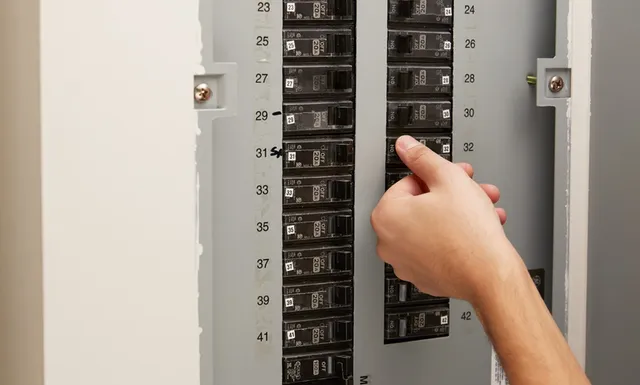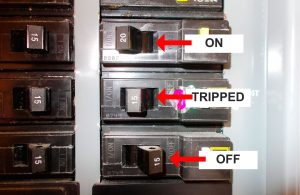Simple Steps to Restore Power Safely in Your Home
We’ve all experienced it — the lights suddenly go out in a room, an outlet stops working, or your microwave powers down mid-use. Before you panic or call an electrician, it’s a good idea to check for a tripped circuit breaker — a common and often simple fix for power loss in your home.
This guide walks you through how to safely identify, check, and reset a tripped breaker in your home’s electrical panel.
What Is a Circuit Breaker?
Circuit breakers are safety devices designed to protect your home from electrical overloads and short circuits. When a circuit draws more electricity than it can safely handle, the breaker “trips,” cutting off power to prevent overheating or fire.
Signs You Might Have a Tripped Breaker:
-
Sudden loss of power to part of your home
-
An outlet or light switch stops working
-
Certain appliances (microwave, hair dryer, vacuum) stop mid-use
-
You hear a pop or click from your panel
How to Check and Reset a Tripped Breaker:
Step 1: Locate Your Electrical Panel
-
Most homes have the panel (also called a breaker box) in the garage, basement, utility room, hallway, or outside.
-
Open the panel door to reveal rows of breakers.
Step 2: Visually Inspect the Breakers
-
Look for a breaker that is in the middle position or completely moved to the “OFF” side.
-
A tripped breaker may also feel slightly loose or out of line compared to the others.
-
Some newer panels have colored indicators (like red or orange) to show a tripped breaker.
Step 3: Reset the Tripped Breaker
-
First, turn the breaker completely OFF — push it all the way to the “OFF” position.
-
Then, flip it back ON — you’ll feel or hear a click as it resets.
-
The power should now be restored to the affected area.
If It Trips Again Right Away…
-
Don’t keep resetting it — this indicates a deeper electrical issue.
-
Unplug any devices connected to that circuit and try resetting again.
-
If it still trips, you may have:
-
An overloaded circuit (too many devices at once)
-
A short circuit or damaged wiring
-
A faulty appliance
-
A defective breaker
-
At this point, call a licensed electrician to investigate safely.
Preventing Tripped Breakers in the Future
-
Avoid plugging multiple high-powered devices into one circuit (e.g., hair dryer + space heater).
-
Spread out appliance usage across outlets.
-
Know which rooms or outlets are on which circuits — label your panel if it’s not already.
-
Have your electrical system inspected if you experience frequent trips.
Final Thoughts
A tripped breaker is a normal part of your home’s electrical safety system — and thankfully, it’s usually an easy fix. By knowing how to check your panel and reset a breaker, you can restore power quickly and safely. But if the problem keeps returning, don’t ignore it — electrical issues can pose real risks if left unresolved.
If you’re ever in doubt, it’s best to consult a professional. Your safety comes first.
Need help identifying an electrical issue?
At Final Analysis Property Inspections, our team of trained inspectors understands the ins and outs of home electrical systems. Contact us today for a comprehensive inspection or consultation.

